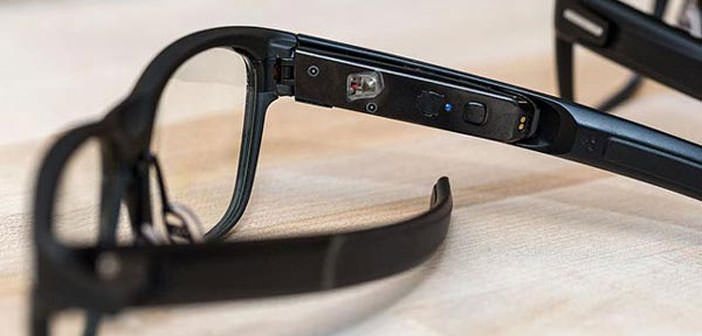Intel Vaunt: here are the trendy smart glasses. Beautiful to see (and to use)
Forget the Google Glass and think of glasses with normal frames without protruding cameras. Here are the new Intel Vaunt: prototype smart glasses with laser that projects images directly on the retina.
The Google Glass project had deluded everyone a bit. Maybe the great enthusiasm of the company of Mountain View probably or even the novelty itself of smart glasses but in 2012 we all believed that in a few years we would have used super-technological glasses able to immerse ourselves in a world halfway between reality and virtual objects.
Google glasses have never really been put on sale and now after a few years Intel, the progenitor’s progenitor, has decided to get involved from this point of view with his Vaunt project.
Intel Vaunt: the technical characteristics
Intel Vaunt glasses must be less troublesome for both the wearer and the observer. This is the starting point for the company project, which sees a pair of glasses similar to the one we can usually find from the optician but with the peculiarity of having a small laser on the side capable of impressing images directly on the retina. Clearly, the laser is very low power. We speak of 400×150 pixels and is moreover invisible from the outside.
In this case, as mentioned, we are talking about a prototype capable of varying its technical characteristics before arriving on the market. In fact, all its components are present inside the two slats, in the part closest to the eyes, in order to take advantage of the greater space of the frame. In particular, it is on the right splint that Intel has decided to put the most important parts of the project, and we are talking about the low-power laser (VCSEL) capable of reproducing holographic images.
In this case, the wearer of the glasses will display the information generated by Vaunt in a very narrow space of his vision, and in particular, you will have in the lower right so as not to interfere with daily activities.
In addition to this, there is also a Bluetooth LE chip to synchronize the glasses with the smartphone but also various sensors such as the movement and clearly enough batteries to ensure a daily autonomy. No presence of the Wi-Fi module or even a microphone, but we are still talking about primordial prototypes, and it is normal that they can change their connotations in the future.
The features of the new Intel glasses
The new Intel Vaunt do not want to exalt themselves for the technical specifications to scream or for functionality that no one has ever seen. They want to be beautiful to see and above all functional. Here the producer did not think about the Vaunts to add information or other to the users’ vision as already happens with viewers for augmented reality, but will display minimal information and only if users decide to pay attention to the portion of space outlined by Intel.
 Clearly, you can read notifications from the smartphone for various, social or other. But you can receive directions for navigating to a particular place or still see images or documents. Also interesting is the possibility of having specific information regarding a specific place when the user is right in it. For example: let’s talk about restaurant reviews or even information about a store.
Clearly, you can read notifications from the smartphone for various, social or other. But you can receive directions for navigating to a particular place or still see images or documents. Also interesting is the possibility of having specific information regarding a specific place when the user is right in it. For example: let’s talk about restaurant reviews or even information about a store.
Unfortunately, no news is given regarding the autonomy of glasses, an important point for future use. In fact, what Intel seems intent on doing is to make the Vaunt project available to third parties who can develop ad-hoc applications and use the hardware platform with a completely ” open ” approach.

